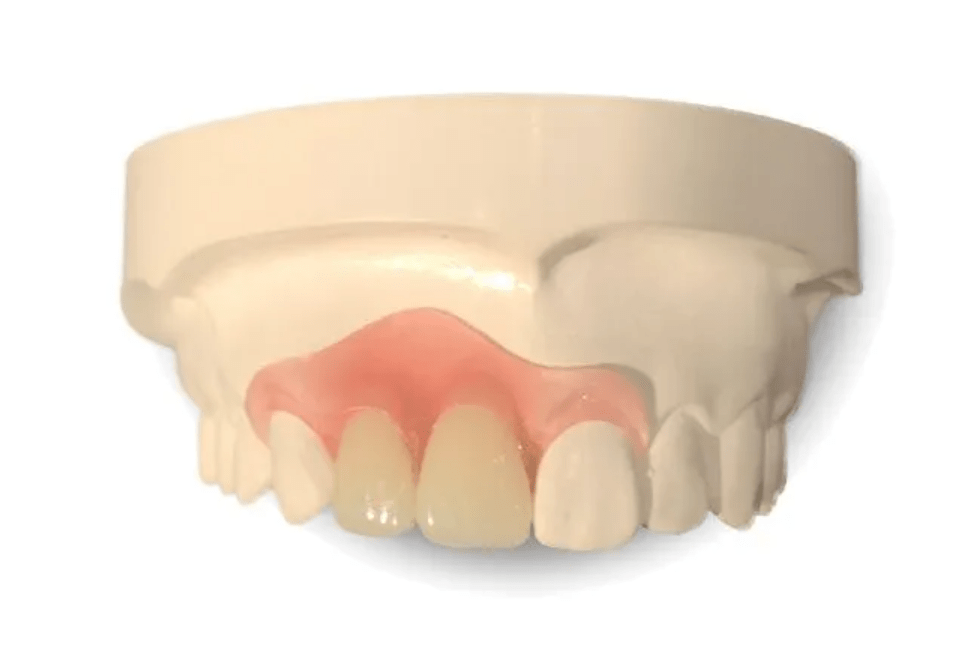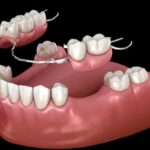Partial Denture Front Teeth
Partial dentures for front teeth provide a removable solution for missing teeth in the front of the mouth. These dentures can improve aesthetics and functionality, restoring confidence and enabling proper chewing.
Patients can avoid biting with the front partial denture to prevent damage and discomfort, opting for smaller food sizes for easier chewing. Additionally, knowing what foods to avoid and how to eat with front partial dentures can enhance the overall experience and longevity of the dentures.
When a visible tooth is missing, temporary solutions like orthodontic wax can provide a quick fix until a permanent solution is obtained.
Regaining Your Smile
Regaining your smile with partial denture front teeth is a transformative experience. Say goodbye to gaps and hello to a confident smile. Enjoy your favorite foods and speak with ease, knowing your smile looks natural and radiant.
Losing front teeth can be a traumatic experience. Partial dentures can help restore your smile and boost confidence. Customization is key to achieving a natural look, and there are many options available, including cast metal and acrylic partial dentures. Flexible partial dentures and immediate dentures are also available.
Dental implants and tooth extraction are other options to consider. When eating with partial dentures, avoid biting with the front teeth and cut food into small pieces that can be placed at the back of your mouth while eating. With the right care, partial dentures can be a great solution for regaining your smile.
Types Of Partial Dentures
There are various kinds available, including metal and acrylic frameworks. Metal frameworks offer durability and stability, while acrylic frameworks are lightweight and cost-effective. On the other hand, Valplast partial dentures provide flexibility and comfort, making them an attractive option for many patients. Additionally, flexible partial dentures offer a more natural appearance and are less likely to cause discomfort or irritation. When considering partial dentures for front teeth, it’s essential to weigh the pros and cons of each type to make an informed decision based on individual needs and preferences.
The Fit And Feel
Achieve a natural fit and feel with partial dentures for front teeth. Avoid biting directly with the front teeth to prevent damage and discomfort. Opt for smaller food portions placed towards the back of the mouth for easier chewing.
Wearing a partial denture for front teeth requires patience. Avoid biting with the front teeth to prevent damage. Cut food into small pieces for an easier chewing experience. Regularly visit your dentist for adjustments if needed. Follow a soft diet initially for comfort.
Aesthetic Considerations
Matching teeth colour and shape: when considering a partial denture for front teeth, it’s crucial to ensure that the replacement teeth match the color and shape of the surrounding natural teeth. This helps to maintain a natural and aesthetically pleasing appearance.
Visibility of clasps and attachments: another important aesthetic consideration is the visibility of clasps and attachments. The design of the partial denture should minimize the visibility of these components to ensure a more natural look.
Eating With Partial Dentures
When it comes to enjoying your meals with partial dentures, there are certain foods to enjoy or avoid. It’s important to be mindful of the foods that may be challenging to bite and chew with your partial dentures. Avoid hard and sticky foods that can dislodge or damage your dentures. Instead, opt for softer foods that are easier to chew, such as cooked vegetables, soft fruits, and tender meats. Cutting food into smaller pieces can make it easier to chew, and using both sides of your mouth can help distribute the pressure more evenly.
For biting and chewing with partial dentures, it’s best to avoid using your front teeth to bite into foods. This can put excessive pressure on the front of your dentures and may cause them to become loose. Being mindful of your eating habits and food choices can contribute to a positive experience with your partial dentures.
Maintenance And Hygiene
Maintaining hygiene with partial dentures for front teeth is crucial for oral health. Regular cleaning and proper care help prevent discomfort and ensure durability. It’s essential to avoid using front teeth for biting and opt for smaller food pieces to preserve the denture’s integrity.
| Proper maintenance and hygiene for your partial denture is essential. |
| Clean your partial denture daily with a soft-bristled toothbrush and mild denture cleaner. |
| Avoid using hot water as it may damage the denture, and always handle it with care. |
| Ensure to brush your remaining natural teeth and gums to maintain oral health. |
Longevity And Durability
It is important to understand the expected lifespan and how to prevent damage. Partial dentures are designed to last for several years with proper care. However, factors such as regular wear and tear, accidents, and changes in oral structure can impact their durability. It is essential to follow the dentist’s instructions for care and maintenance to ensure the longevity of partial dentures.
On average, partial dentures can last from five to seven years, but this can vary depending on individual habits and oral health. Regular check-ups with the dentist can help assess the condition of the partial dentures and address any potential issues early on, potentially extending their lifespan.
To maintain the durability of partial dentures for front teeth, it is crucial to handle them with care, avoid biting on hard objects, and clean them regularly as per the dentist’s recommendations. In case of any damage or discomfort, seeking prompt professional assistance for repairs or adjustments is essential to prevent further complications.
Alternatives To Partial Dentures
Partial dentures are a common solution for missing teeth, but there are also other options available. Dental implants and bridges are two alternatives to consider, both of which provide a more permanent solution. However, these options may be more expensive and require more extensive dental work.
For those who need a temporary solution, there are also options available. Acrylic partials and cast partials are two types of partial dentures that can be used for front teeth. Flexible partial dentures are another option that may be more comfortable for some patients.
There are several options to consider when it comes to partial dentures for front teeth. It is important to consult with a dentist to determine which option is best for your individual needs and budget.
Frequently Asked Questions
Can you bite with a front partial denture?
With a front partial denture, avoid biting directly with front teeth to prevent damage and discomfort. Cut food into smaller pieces for easier chewing.
How do you eat with front partial dentures?
To eat with front partial dentures, avoid biting with the front teeth. Cut food into small pieces for easier chewing.
How can I hide my missing front teeth?
To hide missing front teeth, consider options like a partial denture, dental implants, or temporary solutions like orthodontic wax. Avoid biting with front teeth and cut food into smaller pieces for easier chewing. Consult a dentist for the best solution for your specific situation.
What is a partial denture for front teeth?
A partial denture for front teeth is a dental prosthesis that replaces one or more missing teeth in the front of the mouth. It can be made of acrylic or cast metal and is designed to blend in with the natural teeth.
It is removable and can be taken out for cleaning. To avoid damaging the denture, it is recommended to cut food into smaller pieces and chew with the back teeth instead of the front.
Conclusion
Partial dentures for front teeth offer a practical solution for missing teeth. They improve aesthetics and functionality, but require care. Understanding how to eat and maintain them is crucial for longevity and comfort. Consult with a dental professional for personalized guidance on front teeth partial dentures.




